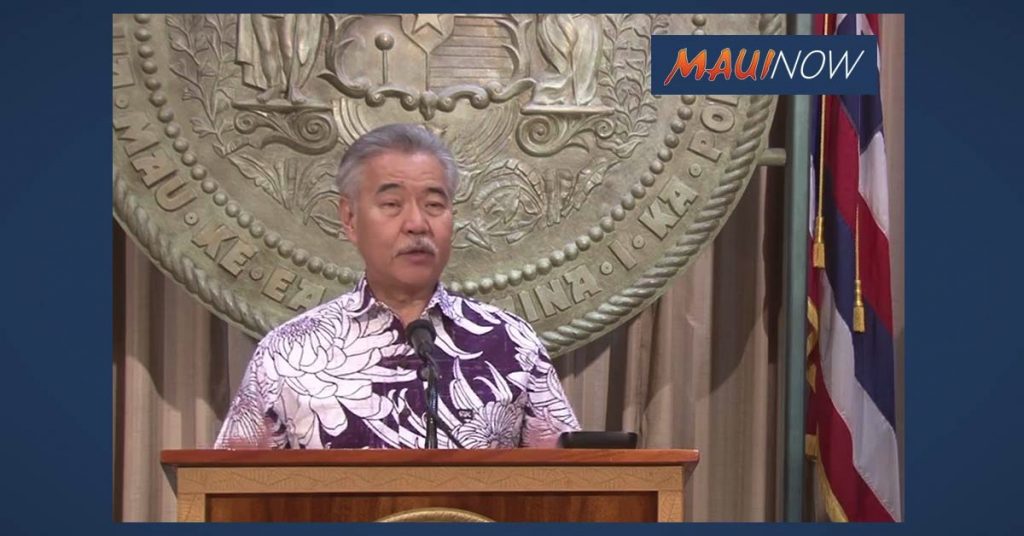
Governor David Ige provided an update today on the state’s COVID-19 vaccination efforts, saying health workers, residents and staff in nursing homes are being vaccinated. Second doses of the vaccine have started to arrive and will also be administered.
In addition, first responders, essential frontline workers and people 75 years of age or older are also beginning to receive the vaccine.
Then, the next phase will involve vaccinating people over 65. It will also include those over 16 who are at high risk of complications from COVID-19 and other essential professionals. In early summer, the vaccine will be open to all members of the community, according to the state plan.
(A complete analysis of who is included in each phase and when the phase will be implemented is provided by scrolling down in this article).
Governor Ige said: “I am asking everyone to maintain our vigilance and continue with the safe practices that have made Hawaii a leader in curbing the spread of COVID-19: wearing masks, hand washing and distance surveillance. By doing this – and being vaccinated when it is our turn – we can protect public health, revive the economy and strengthen our communities. “
Those who may qualify for the vaccine, but are not connected to a specific employer or service location, should make sure that, in the coming days, they visit the state’s hawaiicovid19.com website. State officials say there will be links and more guidance in the coming weeks, where the public will be able to click on ‘I need / want a vaccine’ and receive additional instructions. The state will also establish a telephone line where people can call.
Hawaii Vice Governor Josh Green said the state will increase distribution in about two weeks for those who fall into the Phase 1b category. He said the second week of January is designed to be a time when the federal government and its supply chain can give Hawaii more vaccine each week.
“It has already started, and we have started to vaccinate some individuals in that category, including the first respondents,” said Lt. Governor Green, noting that Hawaii can obtain collective immunity if approximately 75 to 80 percent of the population is vaccinated.
According to Lieutenant Governor Green, a recent survey conducted by the state showed that about 55% of respondents said they would absolutely like to be vaccinated, and another 25% said they were open to being convinced.
“I think 80% of our population will eventually get the vaccine – that’s 80% of 1.4 million – that’s more than a million people,” he said.
To date, the state has received more than 82,000 doses of vaccination. Lieutenant Gov. Green said the state hopes to reach 25,000 doses this week. The projection, according to him, based on information that has been shared with the state so far, is to receive 150,000 doses per month at some point in the future.
There are about 609,000 people combined who fall into phases 1 a, b and c, and large-scale sites are being set up for the distribution effort.
Lieutenant Gov. Green said: “Our number one priority is to keep everyone safe, while working as quickly and efficiently as possible to use the vaccine and put it into action. We ask for everyone’s patience as we and the world take on this monumental task. “
Phase 1a: December 2020 – January 2021
- Health professionals: Paid and unpaid personnel who work in health establishments with the potential for direct or indirect exposure to patients or infectious materials. (Estimated total: 40,000)
- Residents of long-term care institutions: Adults who reside in facilities that offer a variety of services, including medical and personal care for individuals unable to live independently. (Estimated total: 10,000)
Phase 1b: December 2020 – March 2021
- Hawaii residents over 75: adults over 75. (Estimated total: 109,000)
- Essential frontline workers: Workers whose duties are to be performed on the spot and require close proximity to the public or co-workers are at a substantially greater risk of exposure to SARS-CoV-2 and are essential to the functioning of society , with special attention to life and safety first. This includes: first respondents; correctional officers and officials; emergency service dispatchers; individuals essential to federal, state and local government operations; critical transport infrastructure workers (port and port workers, public transport, etc.); critical utilities (energy, water, etc.); teachers and daycare staff and educational support (daycare, preschool, early childhood education, K-12, post-secondary, etc.); US Post Office employees. (Estimated total: 50,000)
Phase 1c: TBD: March – May 2021 (estimated total: 400,000)
- Hawaii residents over 65: adults between 65 and 74
- Individuals with underlying medical conditions: individuals of all ages eligible for authorized vaccines with underlying comorbidities and conditions that place them at increased risk for severe COVID-19.
- Other Essential Workers: Essential workers not included in Phase 1b
Additional considerations
- Vaccine distribution can occur simultaneously between phases
- At each stage, vaccinations will be distributed to populations prioritized first for the elderly, then in decreasing order of age
- Vaccinations can be redistributed if there are significant outbreaks or clusters
- Priority groups can be extended to include others, if deemed necessary to limit the spread of disease, morbidity or mortality
- Whenever possible, vaccination can be distributed to geographically prioritized populations in consideration of current disease activity, disproportionately affected communities and health and socioeconomic vulnerabilities.
Phase 2 and 3
Vaccination of the general population is projected to begin in the early summer of 2021, depending on production and federal dose allocation through “Operation Speed Warp”.
